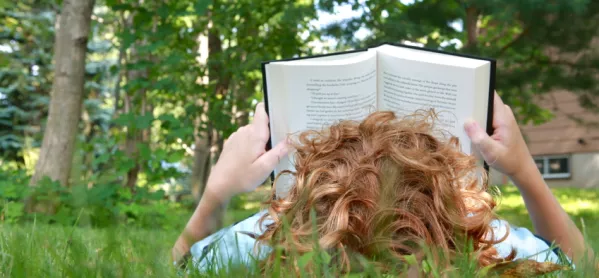The weather is warming up, so the inevitable requests have already begun: “Can we work outside today, Miss?”
The temptation to give in to a bit of outdoor learning will be strong after listening to these demands for three lessons straight. But relocating to the school field, where papers will get blown away and there are no flat surfaces to lean on, can be more effort than it’s worth in many subjects.
Reading, though, is one activity that is perfectly suited to working outdoors. Not only is it a low-maintenance option for outdoor learning, there is also anecdotal evidence that reading outside of the classroom can improve children’s enjoyment of books.
“You can tell stories anywhere that’s safe, from under a tree, to aboard a canal boat, in a tent, at a museum or in a bird hide,” says Louise Stothard of the Federation of Children’s Book Groups (FCBG).
FCBG recently held a ‘Place to Read’ month, in which children and teachers read in unlikely locations.
But, why bother? What’s the incentive to leave the relative comfort of the story mat to traipse outside in uncertain weather? Stothard believes that location can make a real difference to how much children engage with reading.
“Children often enjoy books more when there is something else going on, and will form good associations with reading. Reluctant readers especially enjoy it,” she says.
She suggests finding locations that fit with the story you are reading.
“If you are reading The Wind in the Willows, try a river bank,” she says.
Reading in strange places
Outdoor locations often work best, with many organisations offering imaginative opportunities. Alderney’s Wildlife Trust, for instance, recently ran a reading of The Owl Who Was Afraid of the Dark in its German Second World War bunker.
Or, if concrete bunkers aren’t your thing, why not try a canal or a historic building? Farms offer particularly rich pickings. Whirlow Hall Farm Trust in Sheffield runs sessions based around the story of the Little Red Hen, where children act out the story and meet real hens, while at Susan’s Farm in Carlisle, you can read about Little Baa during lambing time.
Yet you don’t need to travel far afield to find unusual places to read. Something as simple as asking children to sit under their desks can add a frisson of excitement.
Reading in new places doesn’t have to be confined to term time, either. Holly Park Primary school in London held a competition to get children to read more outside of school.
“We suggested children and staff took photos of themselves reading in unusual places in the summer holidays to encourage reading on holiday,” says Sharon Casey, a teacher at the school. “Children were photographed around London landmarks, at beaches, in foreign countries, and received book vouchers for the most unusual place.”
According to a 2014 survey by the National Literacy Trust, only just over half of children enjoy reading. Perhaps now is the time to take reading out of the classroom and into the world.
Here are some options for making it happen:
Ruth Beattie is the former editor of Parents and Nursery World and now a freelance journalist living in Switzerland.

